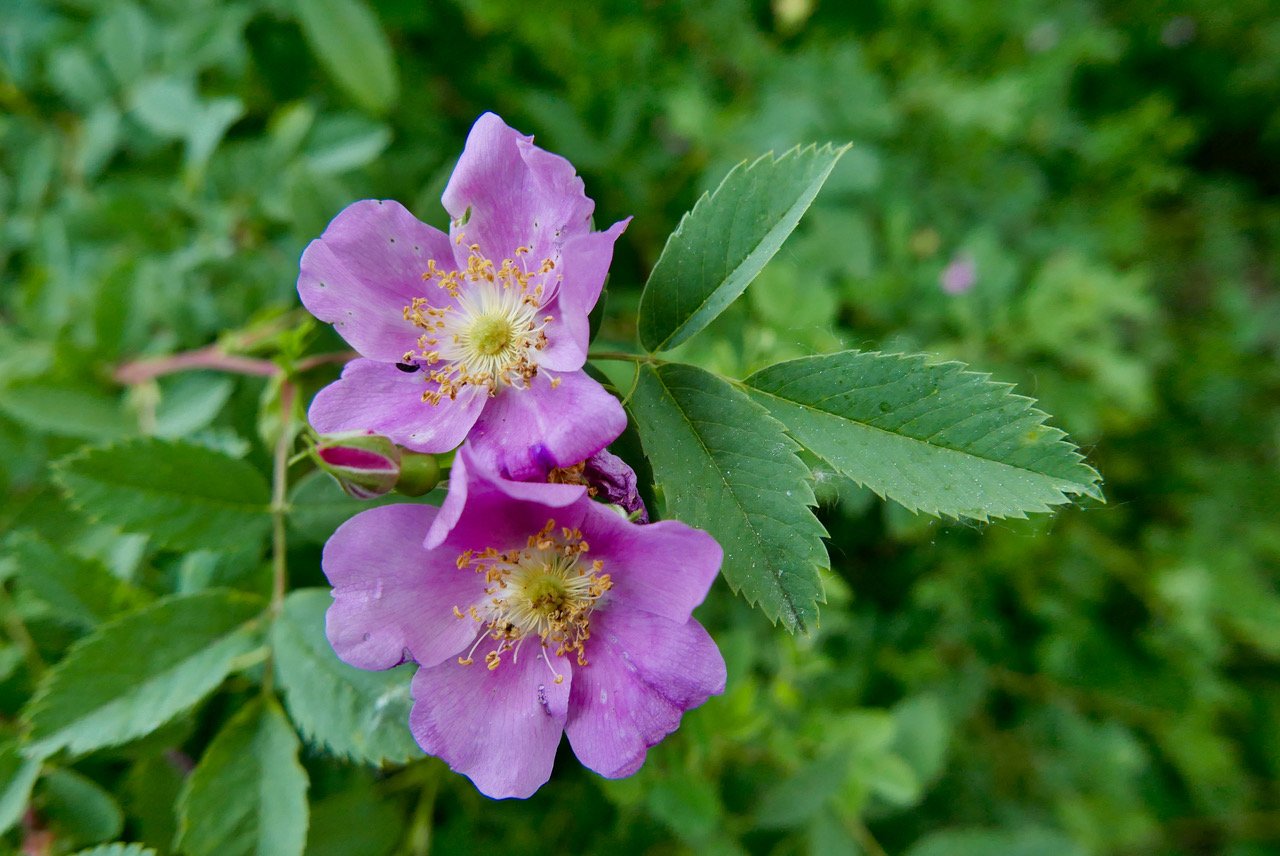Native Plant Alternatives for 5 Common Landscaping Plants
River-Friendly Yards seek to protect the Truckee River from afar, both by using water wisely and by reducing pollutants that could flow down the storm drain and into the river. We can achieve both of these goals by using more native plants in our yards.
Native plants are adapted to our local climate and soils. This means that they usually require less water and fertilizers than many common landscaping plants. If you incorporate them into your yard, that can save you money on your water bill and reduce the potential for fertilizers and pesticides washing down the storm drain. They also provide more habitat and food resources for local wildlife and pollinators.
So if you’re looking for some ideas for native plants to incorporate into your River-Friendly Yard, we have compiled a list of 5 common landscaping plants in the Truckee Meadows and native plant alternatives that look very similar but have the added benefits we mentioned.
Why not give them a try??!!!
#1 Common Landscaping Plant: Karl Foerester Grass
Photo Credit: Patrick Standish from Flickr
Karl Foerester grass (Calamagrostis acutiflora) has become a staple for landscaping in the Truckee Meadows. While it’s a very nice, tidy, upright ornamental cool season grass, it's fair to say that it is a bit overused in our area. Why not mix it up and try a native that looks similar?
Native Alternative: Great Basin Wildrye
Photo Credit: Matt Lavin from Wikipedia
Great Basin wildrye (Leymus cinereus) is Nevada’s largest, native, cool-season perennial bunchgrass, growing from 2-5 feet tall in tidy robust bunches that are 1-3 feet wide. Just like Karl Foerester, it blooms in late spring with tall upright florets. It is also very water-wise! It naturally grows along ephemeral streams, ravines, and ponds in the Great Basin, so it’s adapted to areas that dry out in the summertime. It is also quite fire tolerant and does well in a wide range of Nevada soils, including those with moderate salinity.
#2 Common Landscaping Plant: Lavender
Photo Credit: S. Hermann & F. Richter from Pixabay
Lavender (Lavandula angustifolia) is a popular Mediterranean plant that is very water-wise and provides beautiful aromatic purple flowers in the summer, which honey bees love. Its fragrant flowers also make it pretty deer and rabbit resistant. However, it is a bit frost tender and can be short-lived.
Native Alternative: Purple Desert Sage
Photo Credit: tdlucas5000 from Flickr
Purple desert sage (Salvia dorrii) is a beautiful native with similar purple flowers that bloom in the late spring or early summer. Similar to lavender it is very water-wise and deer and rabbit resistant because of its fragrant foliage. They are also beneficial to honey bees, but because it is native, it also attracts many other native pollinators. Plus, this plant is adapted to the high desert and is not frost tender.
#3 Common Landscaping Plant: Barberry
Photo Credit: Gabriela Piwowarska from Pixabay
Barberry (Berberis sp.) is a popular choice in the Truckee Meadows because it is known to tolerate heat, wind, drought, extreme cold and poor soils. Plus, it’s purple foliage adds nice color and contrast to the garden year round. But anyone who has had to prune this shrub knows that it has some nasty thorns and when overgrown, it can get woody and look dead in the middle.
Native Alternative: Sand Cherry
Photo Credit: Gabriela Piwowarska from Pixabay
Sand cherry (Prunus besseyi), similar to barberry, is a hardy medium to large shrub that does well in the Truckee Meadows. And if you’re looking for a shrub with purple leaves, you could consider the purple-leaf sand cherry (Prunus x cistena). This shrub also provides year-round interest with its foliage color and added beautiful flowers in the spring. Plus, there’s no thorns!
#4 Common Landscaping Plant: Lavender Cotton
Photo Credit: Public domain from Rawpixel
Lavender cotton (Santolina chamaecyparissus) is a low-growing (under 2’), dense, mounding, woody shrub. It has attractive, aromatic, finely textured, silver-gray foliage and small, bright yellow flowers in the summer. It’s an attractive groundcover and works well for edging along paths. Plus, it’s very water-wise when established.
Native Alternative: Sulfur Buckwheat
Photo Credit: Plant Right from Flickr
Sulfur buckwheat (Eriogonum umbellatum), is very comparable in form and shape to lavender cotton and similarly works well as a border plant. It is also extremely water-wise; only needing water every 7-10 days once established! And as an added benefit, this native plant attracts a much wider range of native pollinators.
#5 Common Landscaping Plant: Ornamental Roses
Photo Credit: Diverse Pixel from Pixabay
Ornament roses (Rosa sp.) are great water-wise plants whose flowers add color and beauty to the garden, but that’s where their biggest problem lies - they are all beauty without a lot of pollen for insects. We’ve bred them to have such thick beautiful petals, that it’s hard for bees and other pollinators to access their pollen.
Native Alternative: Wild Rose
Photo Credit: Carrie Jensen from Urban Ecology Solutions, LLC
Our native wild rose (Rosa woodsii), has many of the same benefits of ornamental roses, such as being water-wise and low maintenance. And even though its flowers may not be quite as big and showy, it is still beautiful. Plus, it is better for native insects and pollinators. Just look at how easy it is to access their pollen!
We hope this gives you some ideas for native plants to incorporate into your River-Friendly Yard. If you have other suggestions for native alternatives, we’d love to hear about them! You can always contact us via social media: @onetruckeeriver.










